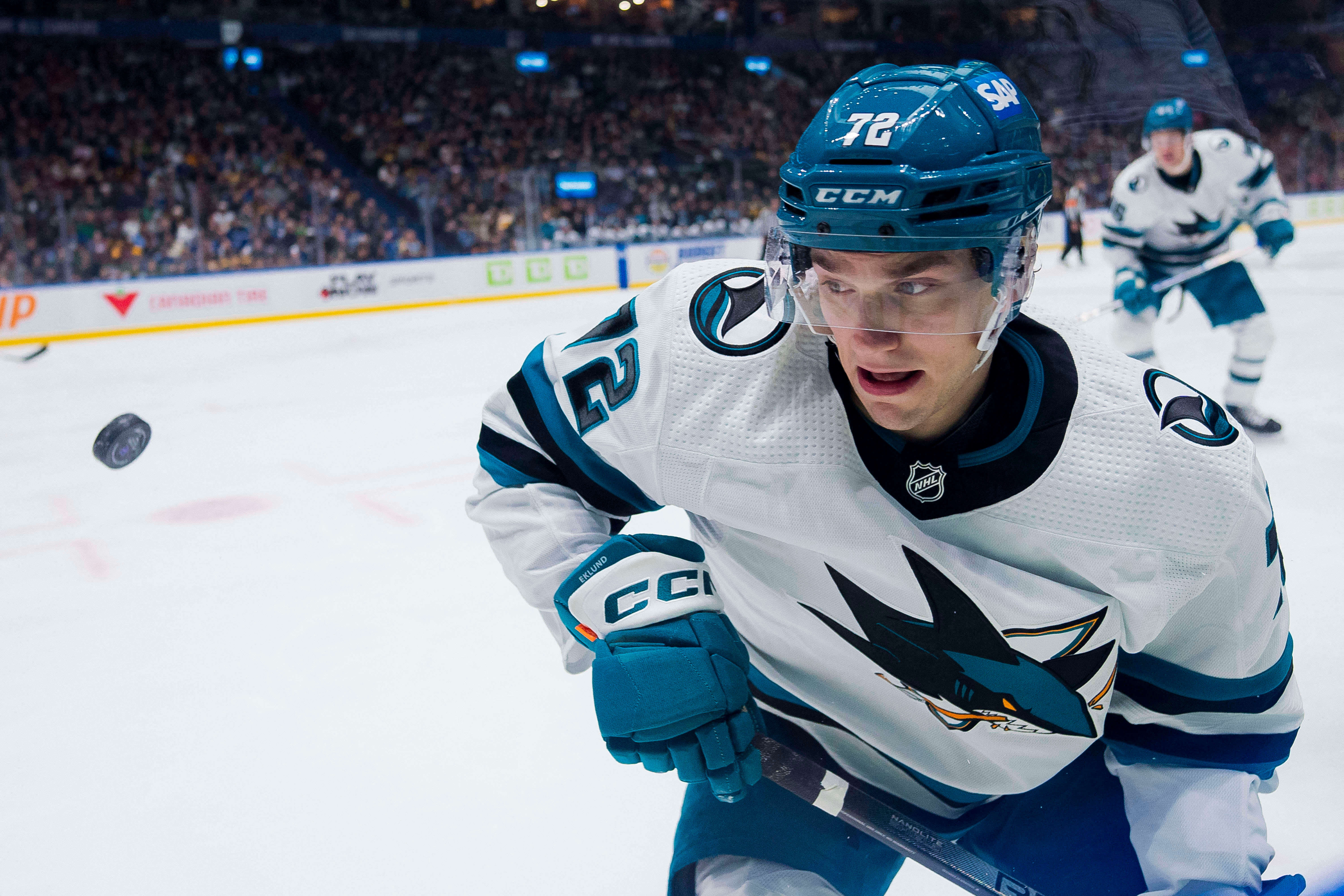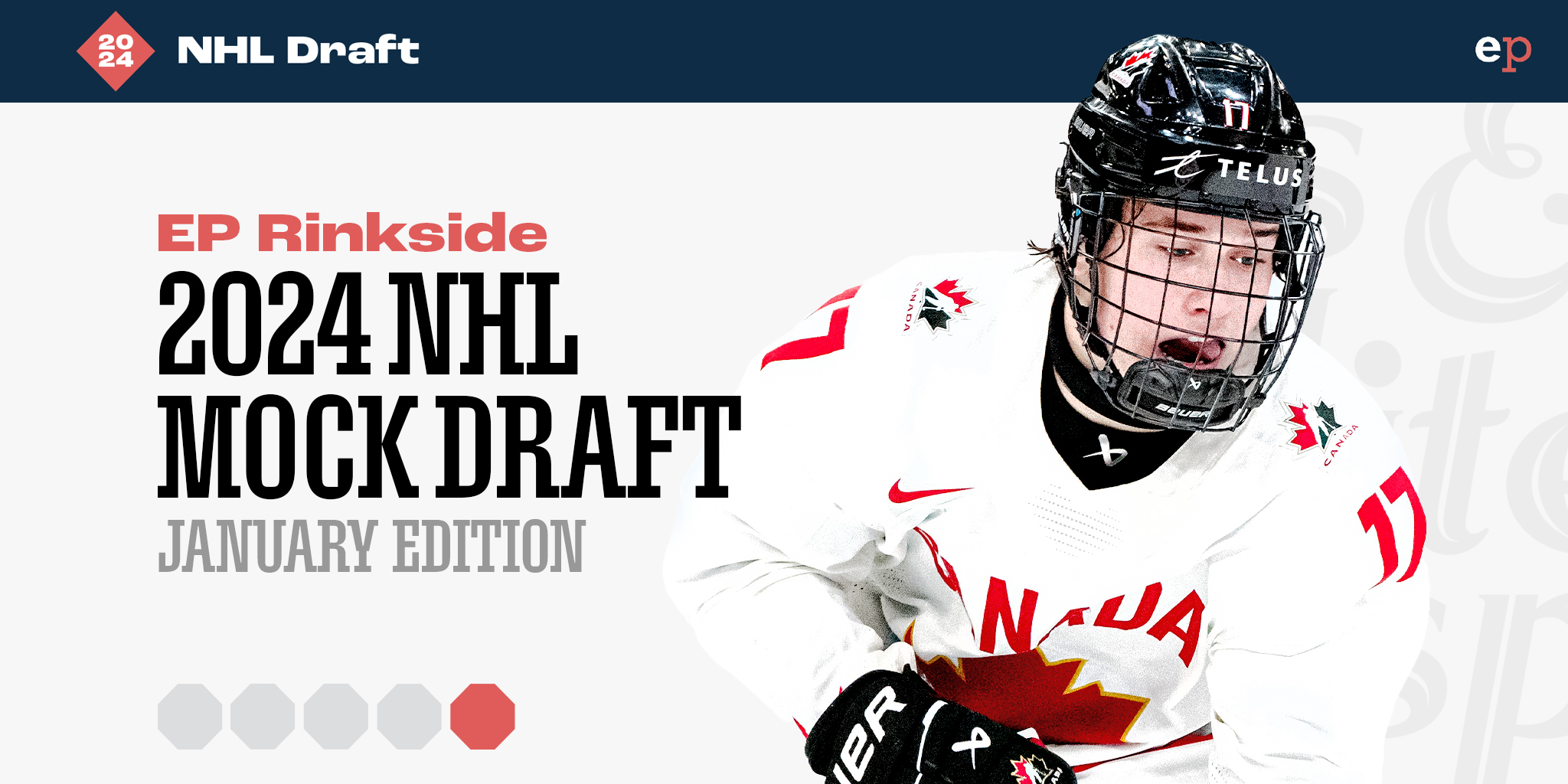Fantasy Hockey Feature: Unlocking Seth Jarvis' shooting habits

Seth Jarvis has been a fixture in the lineup of the Carolina Hurricanes for the past three seasons. His production has varied throughout the years, but as he passes the 200 NHL game mark, questions remain about his upside. Can he be a 70-plus-point player? Perhaps even more? We will dig into those questions and more.
Seth Jarvis, D-1 (#24). Taking a beating both in front of the goal and in the corner, Jarvis is outsized but not outmatched. He’s never out of this play, and in the end he finds the puck between two defenders and pokes it out front to set up the goal. 2019-02-08#Canes pic.twitter.com/DRlYIhAaaK
— Fantasy Hockey Doctor - Victor Nuño (@VictorNuno12) February 12, 2024
Jarvis was taken 13th overall by the Hurricanes in the 2020 NHL draft after a strong second half with the Portland Winterhawks of the WHL. His 2020-21 and 2021-22 seasons were disrupted by COVID-19, but he still managed to have stellar production. After 11 points in nine AHL games during 2021-22, Jarvis unexpectedly made the Hurricanes out of camp in 2022-23 and has been a regular NHLer ever since.
According to EP Rinkside’s Chace McCullum, Jarvis has hovered around a first-line potential since before his draft season. Even though he had that potential, in Jarvis’ first two seasons he paced for 48 and 39 points. That sophomore dip was quite disappointing for fantasy poolies, but the savvy managers knew that his shooting percentage dip to 7.5% wasn’t sustainable. We now know that aside from that season, his career average is nearly double at 14%.
Jarvis has never been a volume shooter. His shots per game each season went from 1.6 to 2.3 to 2.4, even with his time on ice increasing over five minutes in that time. According to Micah Blake McCurdy at hockeyviz.com, in his rookie season, Jarvis scored on more shots than expected for the duration of the season. Since then, he has mostly converted on much fewer opportunities than expected. In particular, in the 2022-23 season when he regressed from a 48 to 39-point pace, his goals went from a pace of 21 to 14.
Seth Jarvis, D+2 (#24). Unafraid of going to the hard areas, Jarvis gets involved in the board battle, then again in front of the net. He uses the net front battle to slide himself into open ice to take the pass and bury it. 2021-11-16 #Canes pic.twitter.com/NEy5oaIRtR
— Fantasy Hockey Doctor - Victor Nuño (@VictorNuno12) February 12, 2024
Jarvis increased his ice time from his first season of 13:52 to 16:12 in his second season with nearly double the power play time on ice. Even though he had more time on the man advantage, his power play individual points participation (PPIPP) was extremely low and was due for positive regression. Now in his third season, Jarvis averages nearly 19 minutes total time on ice and over three minutes with the man advantage. After 51 games this season, he has nearly tripled his power play production from last season
Seth Jarvis, D+3 (#24). Solid on the forecheck, despite his size, Jarvis digs in along the boards and wins possession. 2022-12-10 #Canes pic.twitter.com/hzbIA65OIv
— Fantasy Hockey Doctor - Victor Nuño (@VictorNuno12) February 12, 2024
A great visualization of Jarvis’ impact this season comes from Micah Blake McCurdy at HockeyViz. Here you can see his impact offensively and defensively at even strength (left) and power play/shorthanded (right). Jarvis’ best impact is clearly his defense, but he has a great impact on the power play as well. His even-strength offense isn’t that great.
The best indicator of Javis’ impact via Hockeyviz is the +5.3 Synthetic Goals (sG), which is a metric that aims to combine impact at various strengths, shots for, shots against, goal-scoring, penalties drawn, and other aspects important to a full impact on the game. Jarvis has the fifth-highest sG on the team behind Sebastian Aho, Andrei Svechnikov, Jack Drury, and Stefan Noesen.
Another great way to visualize Jarvis’ impact is via Corey Sznajder’s All Three Zone project. Here we can see microstatistics that give more context to how Jarvis contributes to his team. We can see that much of his transition game is mostly exceptional. His forechecking, passing, and general offense are all great. One of the greatest indicators of offense is one of his best metrics, high-danger assists per 60 minutes. This suggests Jarvis can continue to produce at a high rate.
To get a better idea about Jarvis’ potential, I reached out to someone who has followed his closely for years., Ryan Henkel of The Hockey News who had this to say:
“Seth Jarvis has really blossomed into a complete player for the Carolina Hurricanes. He’s great both with and without the puck and has become a player the Canes rely on in all situations.
He’s an aggressive forechecker who, despite his size, seems to have a knack for consistently winning pucks out of board battles with much bigger defensemen and he’ll backcheck his butt off too.
Jarvis is currently on pace for 26 goals and 65 points which would both be well beyond his career highs. That’s about the production pace I’d expect from him, but it isn’t unrealistic to assume he could be a 30-goal/75-point scorer in the near future. The winger is also second on the team in hits (79) and third in shots (121).
With the way the Hurricanes balance their lines, Jarvis really won’t see an uptick in minutes from what he currently gets. He’s already second among forwards in average time on ice (18:57) behind only Sebastian Aho (19:36). He’s on both the first power play and first penalty kill units and gets regular playing time on either the first or second line depending on how Rod Brind’Amour has his lines configured.”
Seth Jarvis, D+4 (#24). Determination, physicality, and touch seem to be his calling cards. Jarvis battles with Lyubushkin down low, overcomes the size disadvantage and takes him out of the play, then plays the puck out front for a scoring chance. 2023-10-15 #Canes pic.twitter.com/58XsIgnDCW
— Fantasy Hockey Doctor - Victor Nuño (@VictorNuno12) February 12, 2024
So far this season, Jarvis is on a 64-point pace with a few numbers suggesting he might be a little overproducing. His shooting percentage is a bit higher than his career average and his on-ice shooting percentage plus save percentage (PDO) is a touch high, but on the other hand, his PPIPP remains low. This might wash out to around a 65 point pace.
Seth Jarvis, D+4 (#24). Some nice work on the PP as Jarvis gets right in the middle of the play, then parks himself in front of the net, stays there untouched, and is all alone to deposit the rebound. 2023-10-19 #Canes pic.twitter.com/wTgRdEh8mB
— Fantasy Hockey Doctor - Victor Nuño (@VictorNuno12) February 12, 2024
For Jarvis to get to 70 plus points, he is going to have to greatly increase his shooting, something he has shown an aversion to doing. We like Jarvis a lot but feel he will continue to be more valuable to his NHL team than to your fantasy team. While he may go over that 70-point mark, it will likely take some unsustainable numbers to get there. This is not exactly a sell high, as Jarvis is a good player, but if someone in your league thinks he can ascend to much greater heights than he is now, you should see what you can get.



